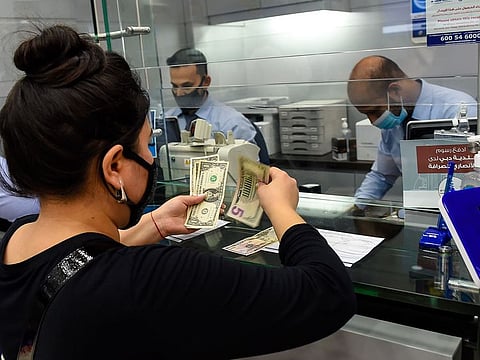Outward personal remittances from UAE declined in Q4 2020
Remittance to India take a big hit in Q4 with 16 per cent decline

Also In This Package
Dubai: Outward personal remittances from the UAE declined by 4.1 per cent or Dh1.7 billion year on year in the fourth quarter according to the quarterly economic review of the Central Bank of UAE (CBUAE) for the fourth quarter of 2020.
This was the result of a reduction in transfers through exchange houses by Dh5.6 billion, while outward remittances through banks increased by Dh4 billion.
Central Bank data showed this is the third consecutive quarter the total outward remittances from the UAE declined.
The total remittances in the fourth quarter of 2020 declined to Dh39.1 billion compared toDh40.8 billion in the same quarter in 2019.
The top three countries for outward personal remittances during the fourth quarter were India, Pakistan and the Philippines accounting for 31.1 per cent, 12.2 per cent and 7.1 per cent, respectively, of the total.
All three top beneficiary countries of remittance from the UAE reported decline with India posting a 15.9 per cent year on year decline in Q4 followed by Pakistan 1.2 per cent and the Philippines 11.5 per cent.
Exchange rate
The depreciation of the dollar had its impact on the exchange rate of the dirham as it is directly pegged to the greenback.
The average nominal effective exchange Rate (NEER) of the dirham, which takes into account the bilateral exchange rates of the UAE’s trading partners depreciated in Q4 2020 by 1.9 per cent and 2.5 per cent quarter on quarter and year on year, respectively.
The nominal effective exchange rate (NEER) is an unadjusted weighted average rate at which one country's currency exchanges for a basket of multiple foreign currencies. The nominal exchange rate is the amount of domestic currency needed to purchase foreign currency.
In the third quarter the dirham’s nominal effective exchange Rate had depreciated 2.8 per cent quarter on quarter and 0.5 per cent, respectively, due to the strong depreciation of the dollar.
In real terms, the dirham real effective exchange rate (REER), which takes into account the inflation differential between the UAE and its trading partners, also depreciated by 2.8 per cent and 6 per cent quarter on quarter and year on year respectively, in the fourth quarter.
REER is the real effective exchange rate (a measure of the value of a currency against a weighted average of several foreign currencies) divided by a price deflator or index of costs. An increase in REER implies that exports become more expensive and imports become cheaper; therefore, an increase indicates a loss in trade competitiveness.
"The higher depreciation in the REER compared to the NEER was due to the lower and negative inflation in the UAE compared to the inflation rates prevailing in the trading partners," the CBUAE said in its report.
Sign up for the Daily Briefing
Get the latest news and updates straight to your inbox









